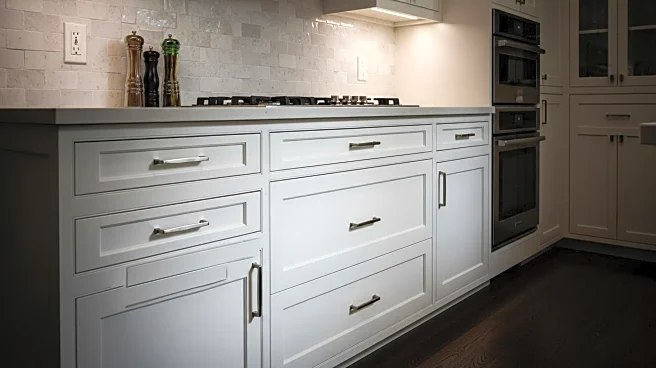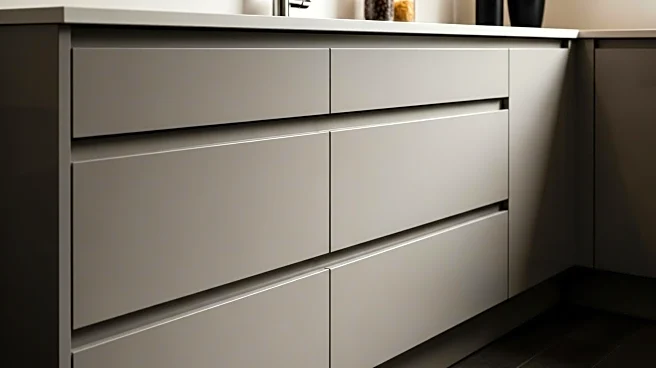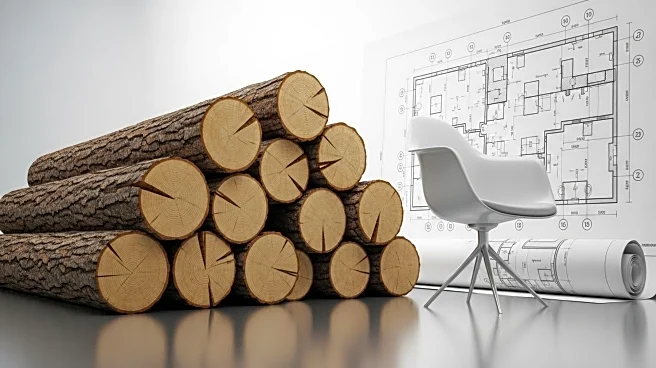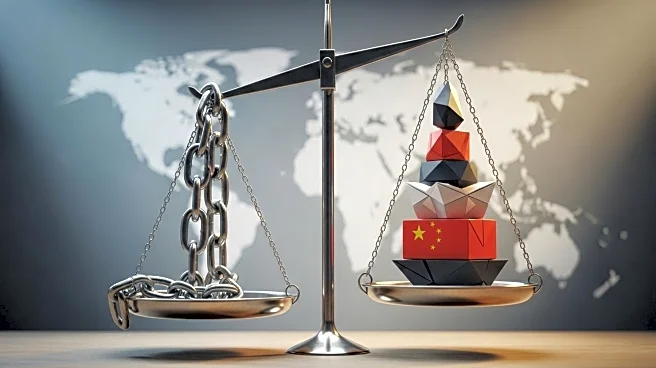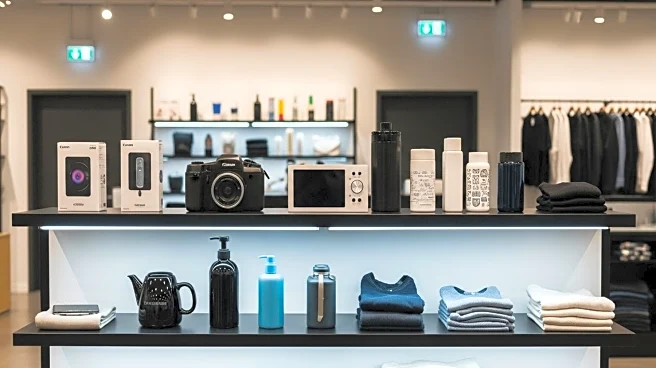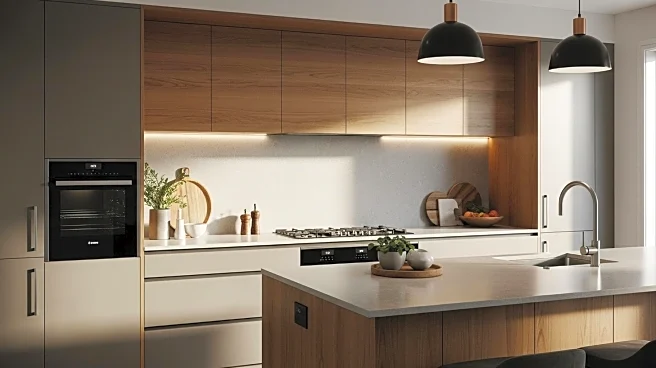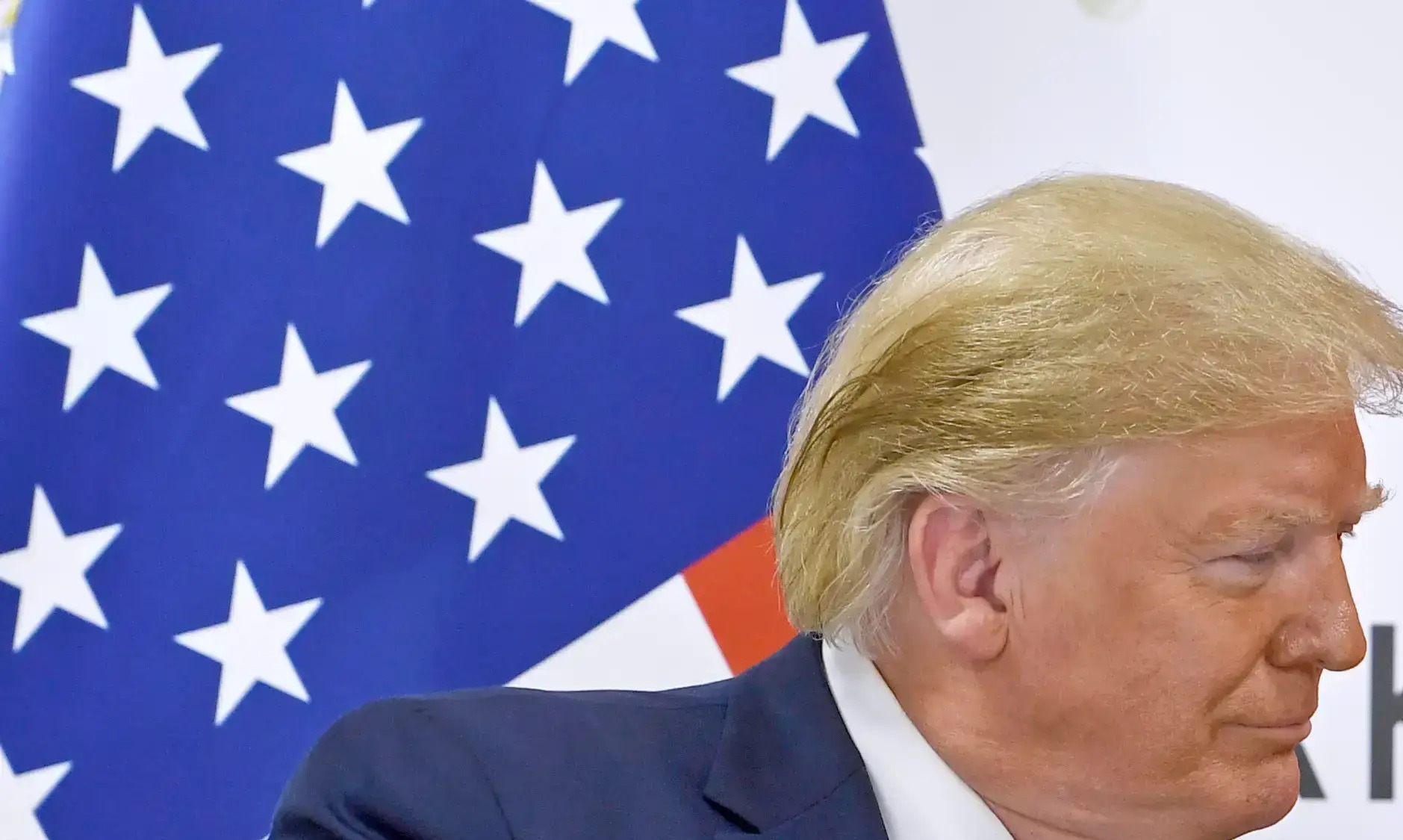What's Happening?
President Trump has signed a proclamation imposing new tariffs on imported kitchen cabinets, bathroom vanities, and upholstered wooden furniture, citing national security and foreign trade practices. The tariffs, effective immediately, include a 25% tax rate on these products until the end of the year, increasing to 50% starting January 1. Additionally, a 10% import tax has been placed on softwood timber and lumber, which are commonly used in furniture and construction. These measures are expected to affect product variety more than prices, as importers may reduce their orders to focus on bestsellers and high-margin products. The American Kitchen Cabinet Alliance and other trade groups have supported these tariffs to counteract the influx of cheap imports from countries like Vietnam, Malaysia, and China.
Why It's Important?
The new tariffs are significant as they aim to boost domestic production and protect U.S. businesses from foreign competition. However, they may lead to increased costs for remodelers and consumers, potentially delaying renovation projects. The tariffs could add approximately $280 to the average cost of building a single-family home, impacting the remodeling industry. While some U.S. cabinet makers may benefit from reduced foreign competition, the globalized nature of the industry means many rely on imported materials, which could raise costs across the supply chain. The tariffs may also decrease consumer confidence, as potential customers might postpone renovations due to anticipated price increases.
What's Next?
As the tariffs take effect, U.S. cabinet makers and remodelers will need to navigate the changing landscape. Some businesses may absorb the increased costs to maintain customer demand, while others may adjust their pricing strategies. The industry will likely see a shift in product variety, with importers focusing on high-margin items. Domestic manufacturers may experience increased demand, but they must manage supply chain challenges and potential surges in business. The remodeling industry will need to communicate effectively with consumers to mitigate concerns about rising costs and maintain market stability.
Beyond the Headlines
The tariffs highlight broader trade tensions and the U.S. government's focus on protecting domestic industries. While intended to support American manufacturers, the globalized nature of the cabinet industry means that tariffs could inadvertently increase costs for U.S. businesses reliant on imported materials. The situation underscores the complexity of trade policies and their impact on various sectors, including construction and home improvement. As businesses adapt to these changes, the long-term effects on consumer behavior and industry dynamics remain to be seen.
